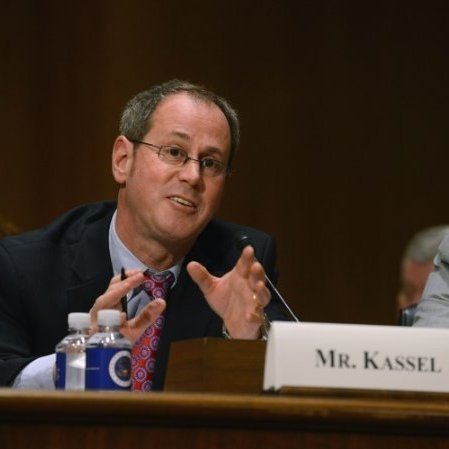About CTLR’s #HumansOfCleantech
Modeled after the New York Times' Humans of New York series, this is an idea by Peter Kelley and the RenewComm team for us to showcase our members!
Follow #humansofcleantech on LinkedIn for more in this series. #climatetech #energytransition #cleantechleadersroundtable
Meet Rich Kassel
I used to ride my bike to work and I would ride from the Upper West Side of Manhattan through Central Park. Beautiful, green, changing seasons, fantastic.
I’d come out of the park at Fifth Avenue and 59th Street, where I would hit a wall of diesel buses, trucks and cabs. That traffic went for about 40 blocks till I got to the NRDC Office.
“I'd leave the park feeling like a million bucks, and get to the office cursing every diesel bus and truck in the way. Often I would say, ‘Why doesn't somebody do something about those darn buses?’ The light bulb went off one day, and I said, ‘I can do something about those buses.’ That is how the NRDC’s Dump Dirty Diesel campaign was created.
“The public health story of the toxicity of diesel exhaust was just starting to be understood. I saw a chance to expand our work into a new area that would be more and more important as time went on. I convinced the NRDC to let me create a campaign that included ads on buses that read, ‘Standing behind this bus could be more dangerous than standing in front of it.’
“The funny thing about this strategy was that we didn’t have money for an ad campaign that most New Yorkers would ever see. But we had a team of lawyers, communications experts, and advocates. And they put together a great strategy that would generate the media attention we needed to actually solve the problem.
“WE HAD FUNDING TO PAY FOR 30 BUS ADS, BUT NO MONEY TO DESIGNATE ROUTES, THE TIME OF DAY, OR DAYS OF THE WEEK THAT THESE ADS WOULD RUN. SO THERE WAS A CHANCE THE MTA WOULD ACCEPT OUR ADS, RUN THEM IN INDUSTRIAL NEIGHBORHOODS AT THREE IN THE MORNING ON A SUNDAY, AND THERE WAS NOTHING WE COULD DO ABOUT IT.
“We hoped they would overreact. We hoped that they would refuse to run the ads when they got them, giving us the opportunity to file a First Amendment lawsuit that would force them to run the ads and be the kind of story that every reporter within 500 miles would want to cover.
“That's exactly what happened. We paid for the ad but never showed them the ad until we delivered it on the day that it was supposed to be put on the bus. The person in charge there said he couldn’t run the ad. He would get in trouble for letting it run.
“We put our strategy to work within minutes. We filed a First Amendment lawsuit that got us media coverage in every major newspaper, and every major magazine. We were on all the morning news shows. It was a crazy success. That led to the MTA’s first fleetwide Clean Fuel Bus plan. And ultimately, it helped lay the foundation for a national program to clean up all buses and trucks. Today’s diesel trucks and buses are more than 90 percent cleaner, and our campaign was a catalyst for bringing attention to the problem of diesel pollution and how to solve it.
“I LATER CO-FOUNDED ANOTHER ORGANIZATION THAT TACKLED THE PROBLEM OF DIESEL POLLUTION IN DEVELOPING COUNTRIES, AND LED THE EFFORT TO ELIMINATE LEADED GASOLINE IN AROUND 100 COUNTRIES.
“All of that comes back to those bike rides down Fifth Avenue cursing dirty diesel buses, saying why doesn't somebody do something about it and then realizing, maybe I can do something about it.”
Rich Kassel grew up riding bikes and rooting for the Islanders on Long Island. After experiencing illegal dumping firsthand during a summer in Maine, he became an environmental advocate. He went on to co-found three non-profits and become a senior attorney at NRDC. He is now a partner at AJW, Inc., which advises startups and other companies and institutions on decarbonization solutions. He was recognized as one of New York’s “50 over 50” in 2019 and has been listed among the “Energy and Environment Power 100” every year since then.


